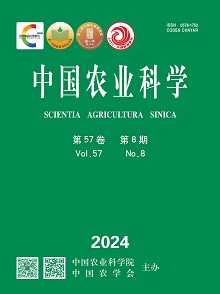Cotton has significant heterosis. Hybrid cotton usually can increase production in lint yield by about 15% compared with conventional self-pollinated cultivars, and also can get obvious improvement in fiber quality, disease resistance, insect resistance, adversity resistance and photosynthetic efficiency. Among some links of cotton heterosis use, the most important link is the castration in the production of hybrid seeds. At present, there are four ways for the castration, such as hand emasculation, chemical male gametocide, nuclear male sterility and cytoplasmic male sterility (CMS). The production practice showed that use of cotton male sterility could not only simplify the hybrid seed production but also save the production cost on a commercial economic scale. In particular, the way of hybrid seed production by use of cotton CMS line, maintainer line and restorer line were the most effective way since it could overcome some disadvantages in the other ways. Therefore, in this paper, the study and application of the cotton CMS system in hybrid seed production were overviewed and some of problems currently limiting application were also addressed. At first, the genetic, cytological and biochemical characteristics of the cotton CMS were reviewed. Secondly, the positive/negative effects of sterile cytoplasm in hybrid F1 were analyzed, and how to overcome these negative effects, such as pollen temperature sensitive and F1 not expressing complete fertility, by developing strong restorer lines with a stronger ability for F1 fertility restoration, was discussed in detail. For an example, transgenic strong restorer line could be developed by introducing the exogenous GST gene, which was assumed to have the function of enhancing pollen vitality, into some conventional restorer lines, and so that hybrids with higher heterosis could be produced by crossing this strong restorer with sterile lines. According to the characteristics of cotton as an often cross-pollination crop, this paper recommended in detail the key techniques of hybrid cotton seed production, such as rules of parent (sterile line and restorer line) selection, location selection and environment optimization for enriching native pollinators to produce more hybrid seeds. Then, the paper pointed out that compared with other crops, cotton hybrid seed production based on CMS system has four advantages in the cotton heterosis use: (1) The purity of hybrid seeds can be guaranteed because there is no pollen in anthers of cotton CMS line and its sterility is very stable and not affected by the climate and other environments; (2) The high yield of hybrid seed can be obtained since the long flowering period (about 3 months) of cotton does not result in the flowering asynchronism between sterile line and restorer line; (3) The wide ecological adaptability of cotton and the possibility of large-scale hybrid seed production will be benefited to popularize hybrid cotton; and (4) Interspecific heterosis between upland cotton (Gossypium hirsutum L.) and sea-island cotton (G. barbadense L.) can be used. It is predicted that the hybrid cotton production based on CMS system will be the main approach to utilize heterosis of cotton. Finally, the future works in study and application of CMS in cotton heterosis, especially in development of new sterile lines and restorer lines by use of modern biotechnology, was also discussed.











